Sometime back, after creating the linked article “Our Kontragitarre Playing Cousins” off the main Players page, I subsequently received a friendly “hello” from a couple of them, including Vienna’s Peter Havlicek, who’s had me on his newsletter list ever since. A recent email included an interesting new release (CD? Book? Man, I gotta remember my German!), called “Schrammel und die Jazz.” I hinted that I’d love a review copy, and a couple of weeks later, a package arrived, containing the small pile above. Thanks, Peter!
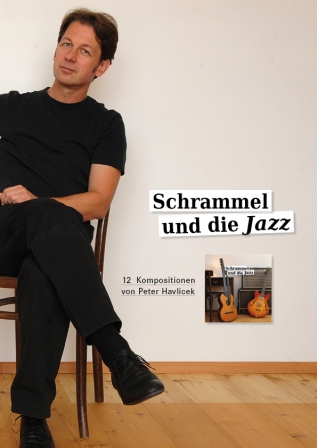
The book contains various compositions for guitar or Viennese harp guitar (often with other instruments) that Peter has written and recorded over the years, and recently being performed in a special new concert as well. I was interested in hearing them and found two pieces on one of the CDs in the bunch. These three releases are nicely representative of the various – and highly varied – musical settings the versatile Havlicek works in these days (see his website for the partial list). Including, but by no means limited to:
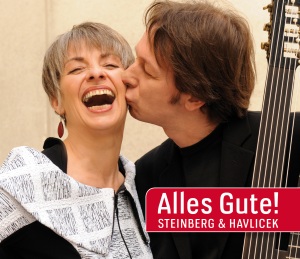
Steinberg und Havlicek: Alles Gute!
The duo of Peter Havlicek and Traude Holzer has been performing together for many years. If you are confused by the name (as I was!), it’s because today, Traude – or in this case, the duo – is still known by her original “stage name,” Steinberg (the nickname of the house where she grew up). On this 2010 recording – the fourth S & H album – the duo sings all sorts of traditional and modern Viennese repertoire (in German naturally, with one in English), while Peter provides accompaniment on his kontragitarre, with an occasional electric guitar, or sidemen on button accordion and violin. I found a ton of videos of them (and some of Peter’s other work) on the dedicated Schrammel TV website, so check them out there when you can.
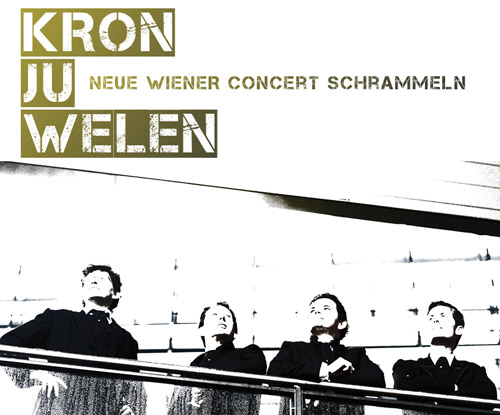
Neue Wiener Concert Schrammeln: Kronjuwelen (“Crown Jewels”)
An exquisite “Schrammel quartet,” the group actually has six members, as two of them are alternate players (in concert, and on record). The lineup includes two violins, chromatic button accordion and kontragitarre – an iteration of the original Schrammel brothers’ quartet with harp guitarist Anton Strohmayer in the 1880s (they originally used clarinet, later accordion). On this 2012 release (the group’s 5th), “they explore the roots and connections of their style of music with music that was composed in neighbor-countries of the former K.u.K. monarchy. The monarchy is long gone, but the beauty of this music lives on.” Thus the selections here are nicely varied, with some dynamic East European-flavored pieces (think Hungarian), along with the expected Viennese waltzes. Peter plays his trademark 13-string kontragitarre, and somehow manages to create the illusion of endless chromatic low notes with just 7 sub-bass strings. The bass lines are wonderfully rich and prominent, and Peter’s virtuoso bandmates are a joy to listen to throughout; the lush sound created by the three of them bordering on orchestral at times.
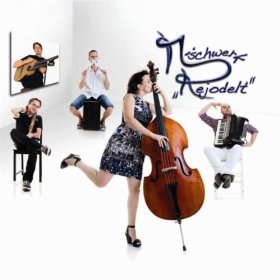
Mischwerk: “Rejodelt”
This brand new release was my favorite surprise in the bunch. Peter sits in on a couple of tracks (including the two he penned) on jazz guitar, and one with his kontragitarre. His friends are highly original, musical and entertaining. While the lineup is sparse – just clarinet/winds (Reinhard Uhl), accordion (Helmut Stippich), upright bass (Maria Stippich) and cajon (like our “beatbox”)(Franz Hofferer), with three of them singing (and otherwise vocalizing), often in harmony – they put out a lot of sound and energy. Each track is unique, from the sublime to the zany (they open with The Simpsons theme).
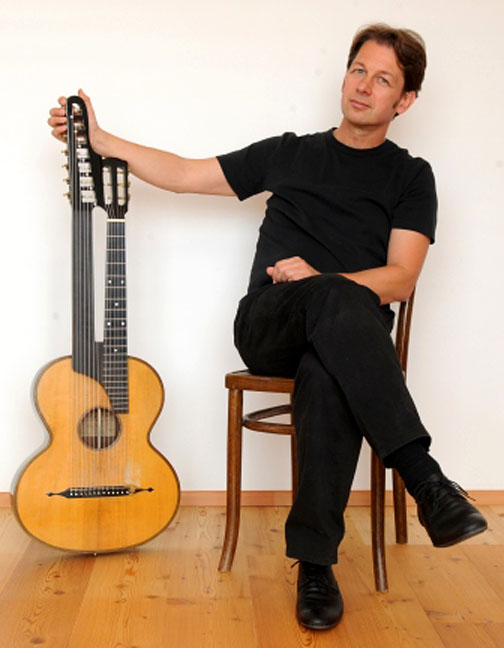
Of course, readers of this blog are interested in Peter’s harp guitars, so he obliged us with the details:
“My everyday guitar is a 13-string kontra by Ignaz Johann Bucher (1828-1881) repaired by J. Swosil in 1894 (above). In the 1970s Erhard Hassek renewed the head and added geared tuners. I have played the guitar for about 14 years nearly every day, and it has made the most interesting shifts in sound I have ever heard. For the first three years, it had many high frequencies (before it was played 4-5 hours a day in smoke-filled rooms). In the last three years, it developed much more bass and some very nice natural overtones. I think it’s very important to be with one instrument in order to develop its own sound in combination with your own sound and of course new ideas!
I have another 13-string by Josef Swosil built in 1901 (above) and a wappengitarre (below) by Ludwig Reisinger (1863 – 1940s), both very fine instruments. (Swosil made the 13-string instrument that Strohmayer played in the original Schrammel quartet, so that particular style of kontragitarre, if not maker, is the most “iconic” in Schrammelmusik – GM)
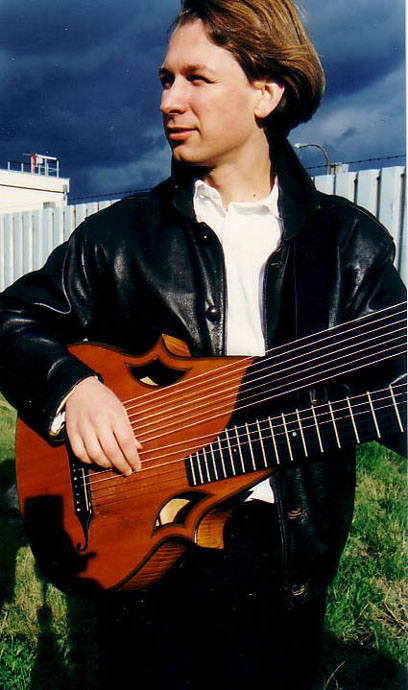
I tune the 7 basses chromatically (from high Eb down to A), though sometimes I tune them G-A-B-C-C#-D-Eb in order to have the low G. Musically, we are rooted very deeply in our Viennese music that is named after the brothers Johann and Josef Schrammel, so Schrammeln means the Schrammel players. We are searching for many new ways to transform our old music to the present time, but you should always be able to hear that we come from Vienna. I´m exploring how 2 or 3 of the bass strings can sound nice together and make new “fatter” sounds. To develop the music is the biggest goal!”
I agree, Peter – and thank you for sharing with us a bit of your historical-meets-modern Viennese musical world!

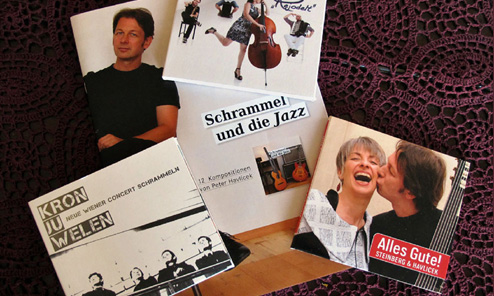
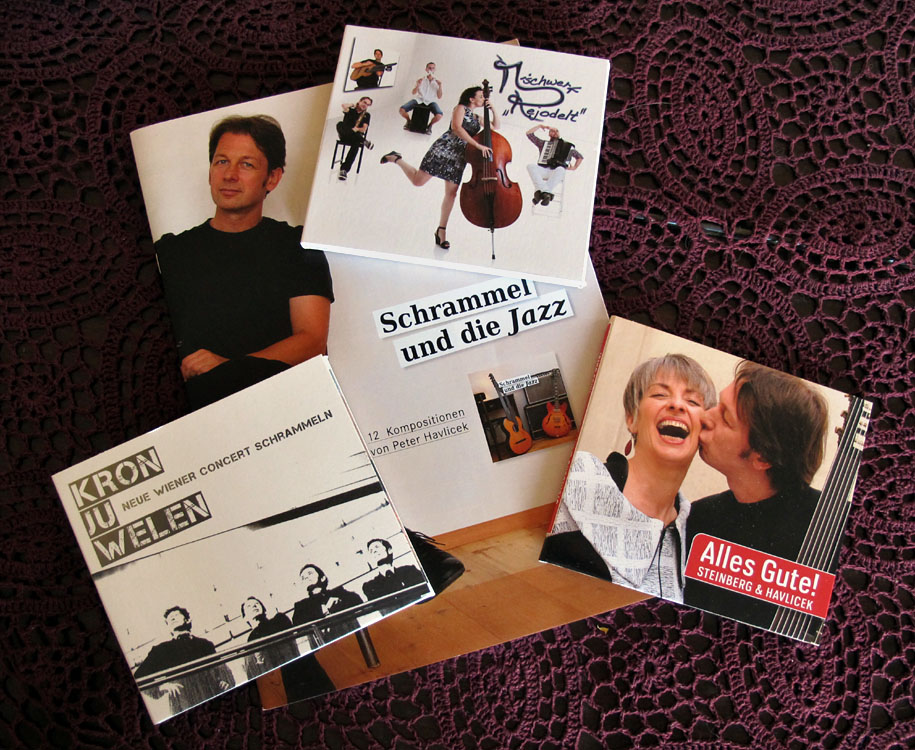
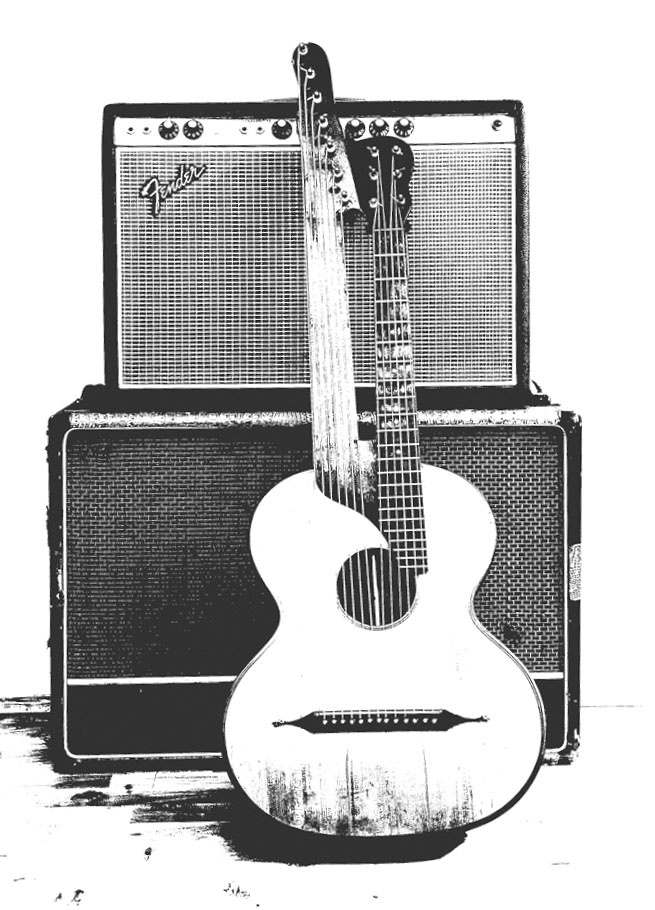
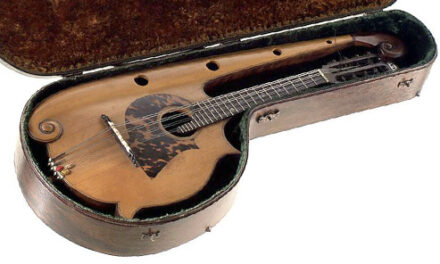
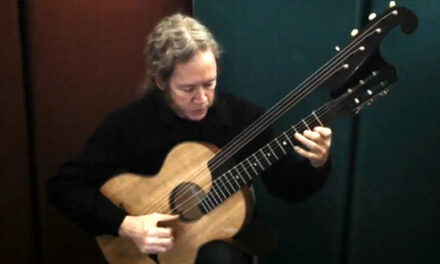
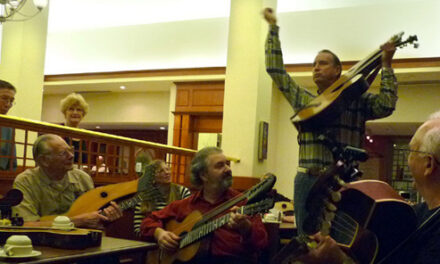
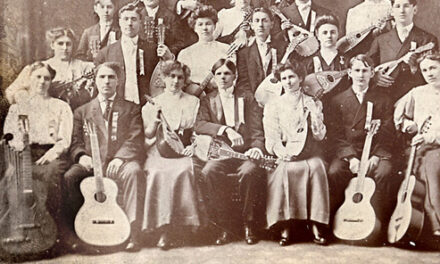
I borrowed these from Gregg and was particularly impressed with the Neue Wiener Concert Schrammeln. Most Schrammel groups I’ve heard can perhaps best be described as quaint. These guys are real virtuosos. The recording quality on this and their other CDs (I have almost all of them now) is spectacular. You can hear the kontragitarre clearly throughout. Peter’s bass lines are far more developed than I’ve heard from other players in Schrammel groups. My favorites, of their CDs, are Zamona, Tanz, and Kronjuwelen. Zamona and Tanz are readily available at Amazon in the US. Downloads of 5 of their albums are also available from Amazon and probably other download sources. I highly recommend Neue Wiener Concert Schrammeln to anyone interested in the best representation of the kontragitarre’s use in the Schrammel tradition and anyone interested in passionately played music in folk/classical styles!